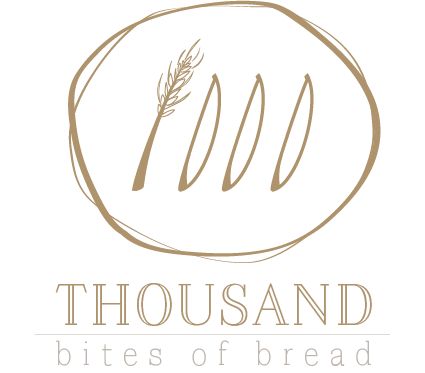Books and bread are two of the headiest things in this world. Combine them and I can’t help but delve in. Here is the first installment in recording my adventures with books & bread.
Book:
Josey Baker Bread by Josey Baker
Recipe:
Dark Mountain Rye
I was lucky enough to discover Josey Baker Bread long after I’d already become an avid home baker. Oh man, what crazy ardent joy I discovered when this book landed in my lap! First, there is nothing about Josey that’s not steeped in exuberance. He releases smiles and encouragement at every turn, in every room. I saw it the minute I walked into his bright, airy bakery on Divisadero in San Francisco. I knew only one thing about The Mill: It was owned by this dude named Josey Baker (yes, his real name), and some of his employees had traded time with the bakers at one of my favorite spots in Portland for the purpose of each learning from the other. Wow! I thought. Way to keep the spirit of inquiry alive and well, especially in a professional setting.
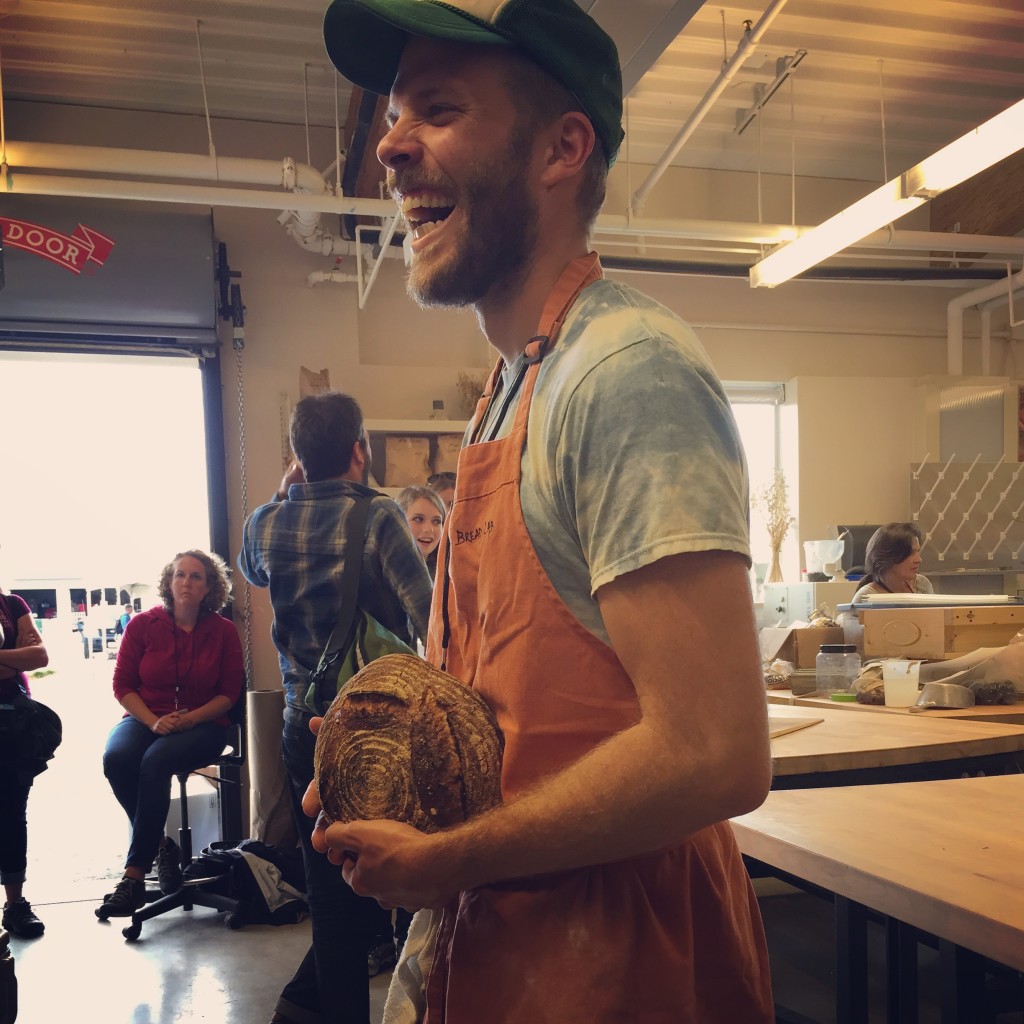
It turns out that embodying a teaching heart is what Josey Baker is all about. But let me back up.
There I was at The Mill ordering every single item on the toast menu when I brushed up against his book. Okay, cool. Not something I needed since I was already baking four loaves a week at that point. I sat down with my friend and delved right into heavy toast consumption. I made my way through nibbles of whole wheat sesame toast with maple…country bread piled thick with cinnamon sugar…homemade “nutella”…gouda tart…but it was when I came to the seedy rye toast that things changed.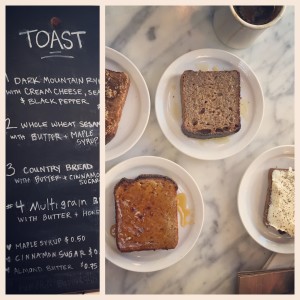
All of it was good—better than good, even—but the rye toast moment stood out. Every once in a while, a bite of food becomes more than just a bite of food. It becomes a point of origin, an intensely intimate act that allows time to stop so you can step in and hone the whole experience of being alive in a sensual world. That’s one big bite, indeed, but it’s the truth. The rye bread moved me. It was nuanced with all kinds of roasted flavors that brought me back to my Polish grandmother’s table. It had surprising sweet and herbaceous notes coming through at every chew. It sent Muse-like chills up my spine the way a good piece of music expresses various highs and lows and rounds out the sensory experience with subtle undertones. This toast was both freedom and celebration the way that stumbling upon a roomful of people noodling late-night on instruments can feel like an unencumbered party for all involved. The grains here were playing well with each other, expressing themselves together and separately all at once. I couldn’t stop. I finished the piece of toast and went straight back to the counter and bought a whole loaf of dark mountain rye and Josey Baker Bread by Josey Baker. When I got back to my friend’s house, I ate three more pieces of rye bread, tearing into them with a beginner’s devotion, and started flipping through the book.
I desperately wanted to overlook most of the book as something that only a beginner would need; it’s set up as a series of lessons, staring with the basic “Your First Loaf of Bread” recipe. I slammed the book shut, swiped the last crumbs of flax and sesame comingling with the rye onto my finger and into my mouth, dabbed a nip of butter away. But I won’t start with chapter one, I thought.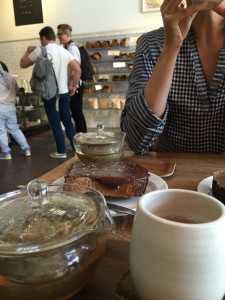
A week later, on impulse, I opened Josey Baker Bread to chapter one and pulled out a few things I hadn’t used in a while—all purpose flour and instant yeast. The reason? Yes, I’d been making bread for years, but I didn’t have an in-depth understanding of what I’d been doing from the simplest part of the process to the more complex. I’d skipped all these early lessons and gone straight to my passion for whole-grain, naturally-leavened bread. Josey Baker has found a clear way to put all the pieces back together and I was fascinated by how the lessons build upon themselves. First you learn the simplest straight doughs, then he teaches how to make a preferment, and only later do you delve into naturally-leavened dough. But the thing is, I went back and learned all these really easy techniques and it has made me a better, more confident baker all around. Now I understand why I do what I do.
The most important thing I learned from Josey, though, both in his book and subsequently in his presence, is that it takes a beginner’s heart—that passionately open state of play—to take in anything and everything about a process from the inside out. Baking with Josey is fun because he’s generous about everyone having fun right along with him. He amuses himself with the process and encourages you to do the same, all the while capturing a jauntiness for not taking anything too seriously. As much as I adore many of the baking books that came before his, sometimes they feel a little rigid.
Every now and then, I open the book and thumb through to the next lesson and then the next. Not because I don’t know the material, but because I’m having a good time making pretty good bread even better.
This morning, I finally arrived at lesson seventeen, the one that teaches Dark Mountain Rye. And now I’ve delved into my beginner’s heart all over again because rye is a new adventure for me. Even though I’ve put small amounts into dozens of loaves over the years, I’ve never made 100% rye bread in all its gliadin-glutenin-ratio glory. Rye is a totally different beast when it comes to fermentation and who better to walk up to this new instrument with than someone who will let you play and make mistakes and stand by your side encouraging you to try and try again?
Here’s my first loaf of rye, and while it’s not quite the bread I tasted at The Mill a few years ago, it’s damn close and I’m excited to keep delving in and learning new things about it and eating a thousand loaves while getting messy in the kitchen.
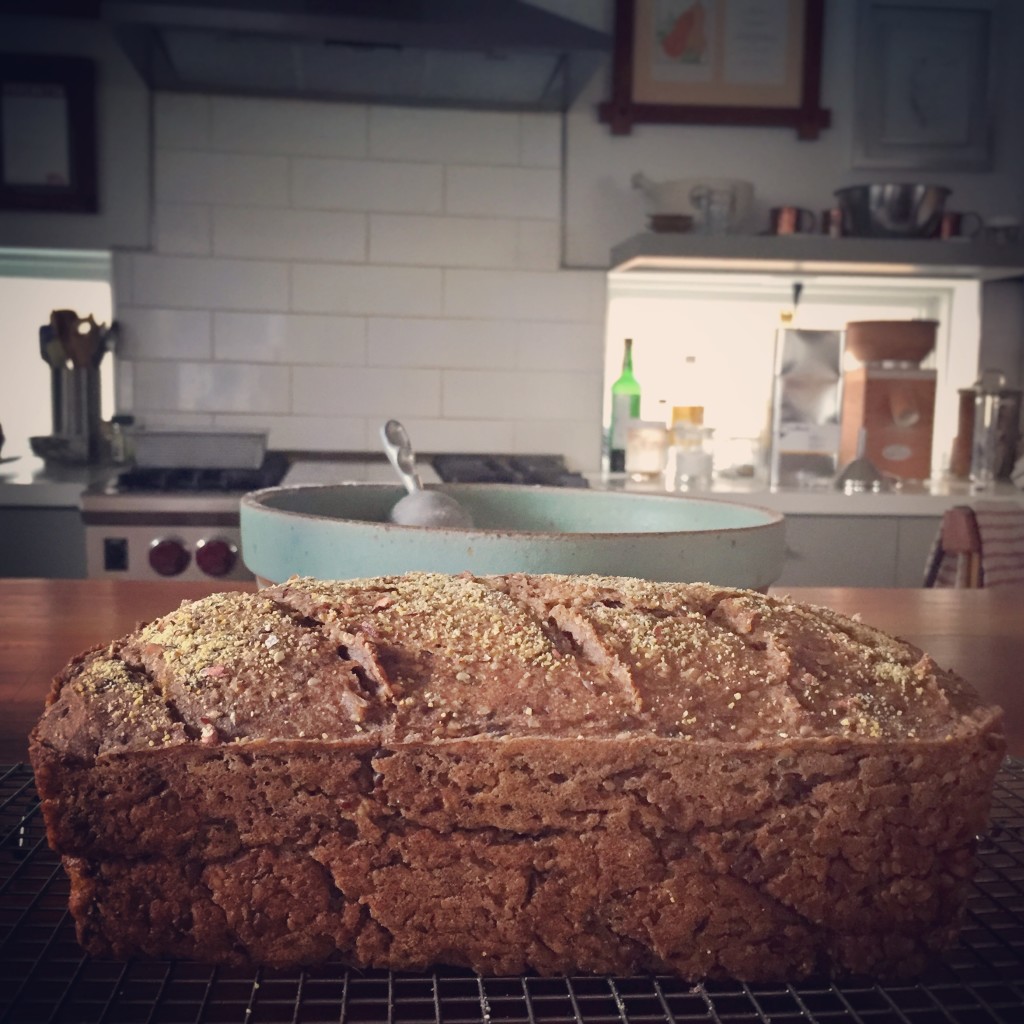
Somewhere in the recipe, he says something like, “Sprinkle some cornmeal on top and feel good about yourself.” And it works. Lifting the cover off my first loaf of rye after 30 minutes of baking was magical just as Josey said it would be. Rye behaves so differently than wheat and I wasn’t sure if it had fermented long enough when I put it into the oven, but feeling free to frolic took away that foreshadowing of failure that often stops us from trying new things and instead left me with a wash of intrepid experimentation. My fear was lower, while my inquisitiveness sunk in deeply. How is rye different from wheat? I pondered. What will this dough smell like in the oven? I wondered. Will it have the same kind of oven spring?
My curiosity led to some answers (very different; toasty, malted aromas; yes) and also more questions (what’s with the aging of the bread for a day?) But here’s the thing—anything worth pursuing in your freetime at home should include a little rabbithole of possibility. If you’re going to keep making good bread, you’ll have to follow your spirit of inquiry and make a few wrong turns along the way. Why not laugh and have fun in the process? Josey Baker does, and he’ll teach you how, too. And that, my friends, is a lesson worth keeping close at hand. 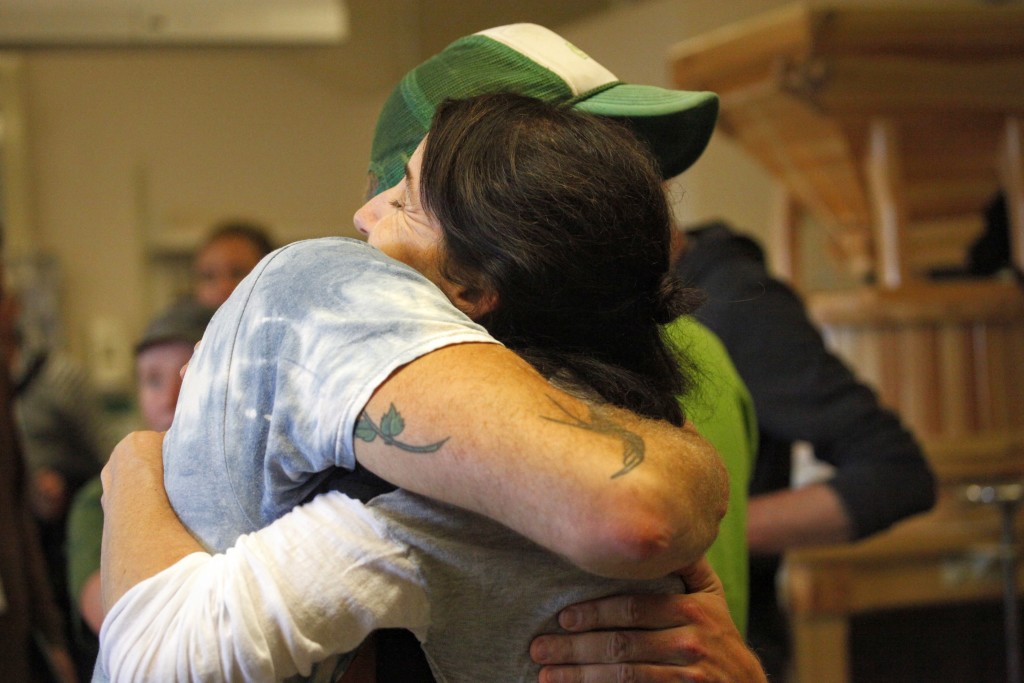 *Photo by Martha Holmberg at the Grain Gathering 2015
*Photo by Martha Holmberg at the Grain Gathering 2015
